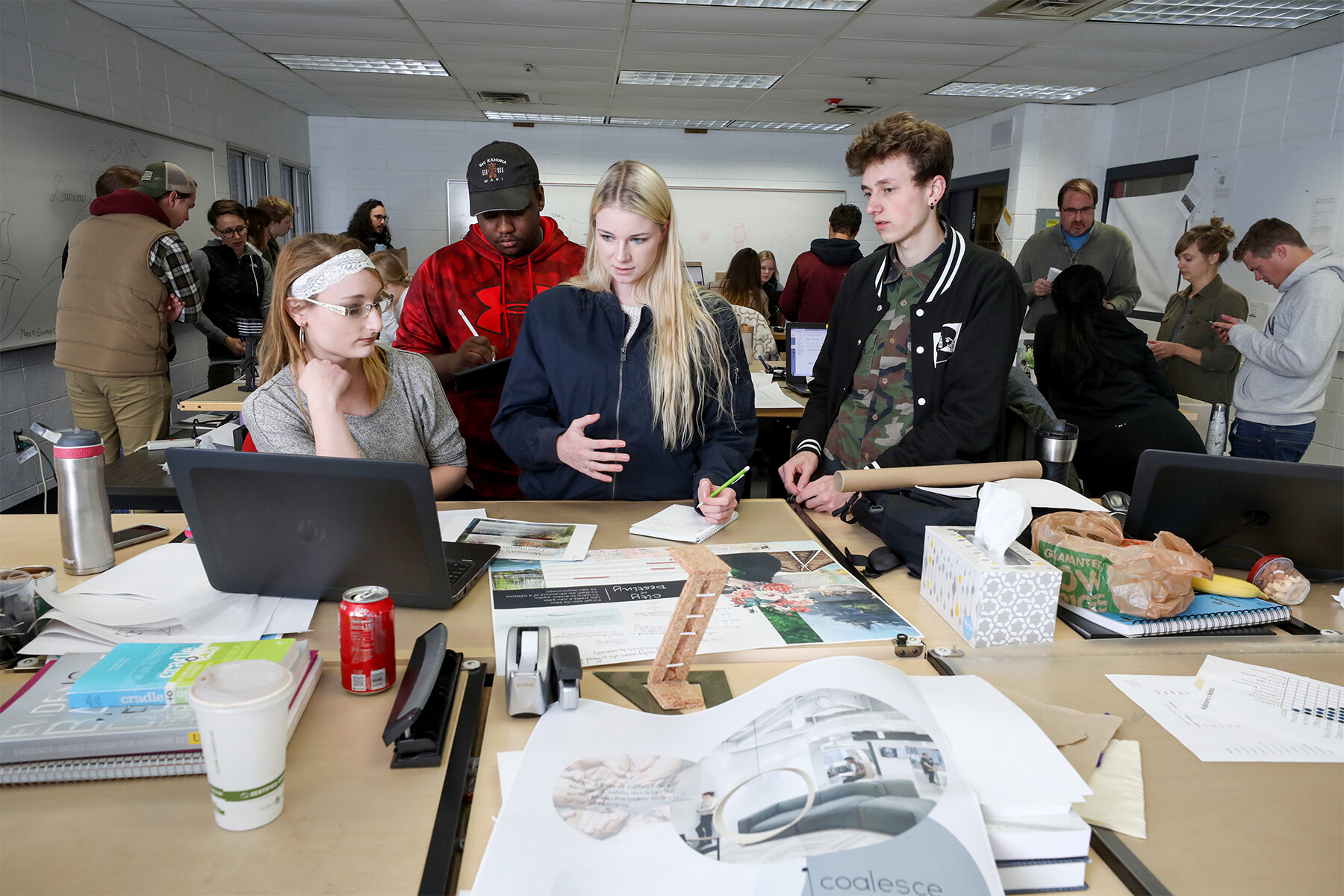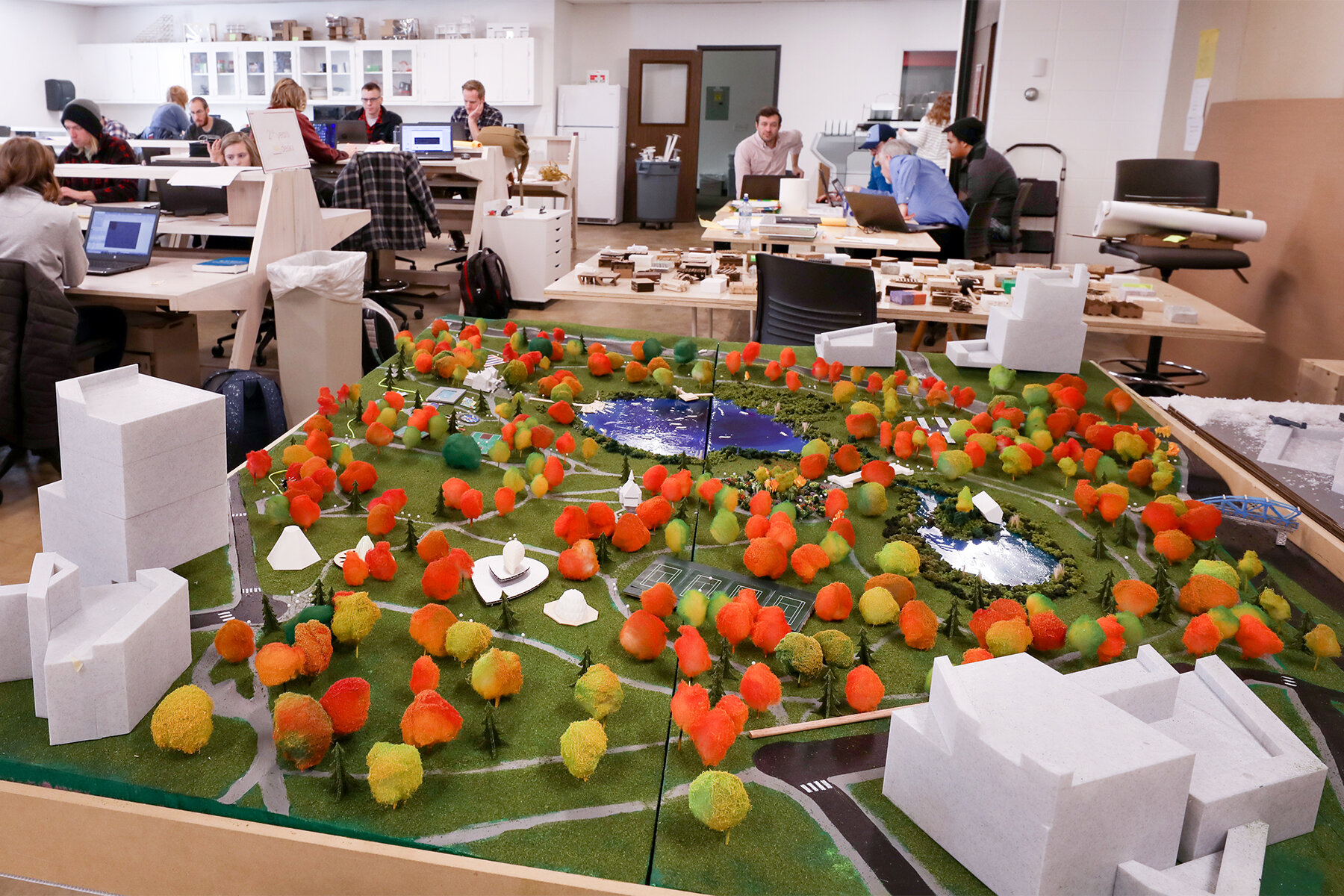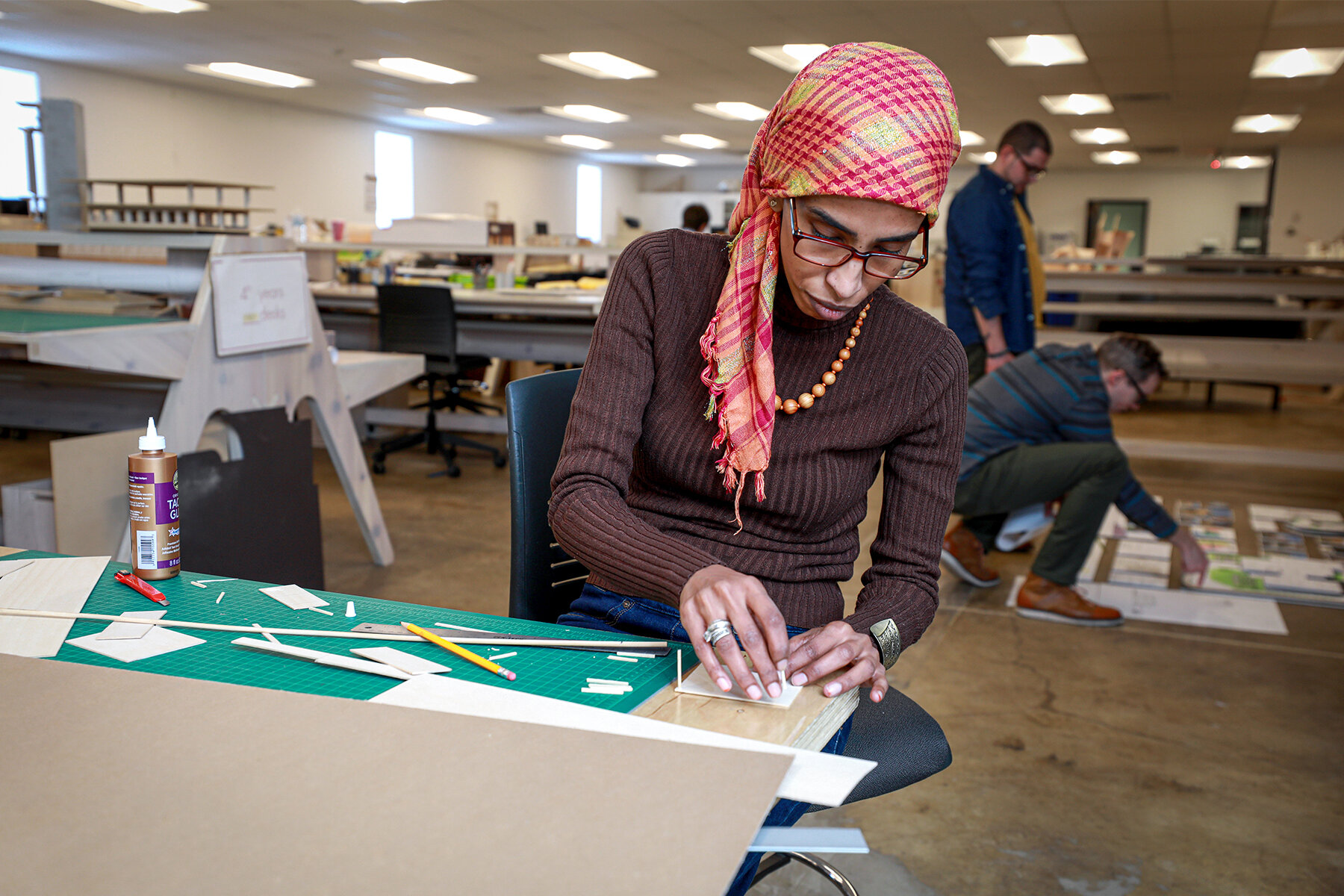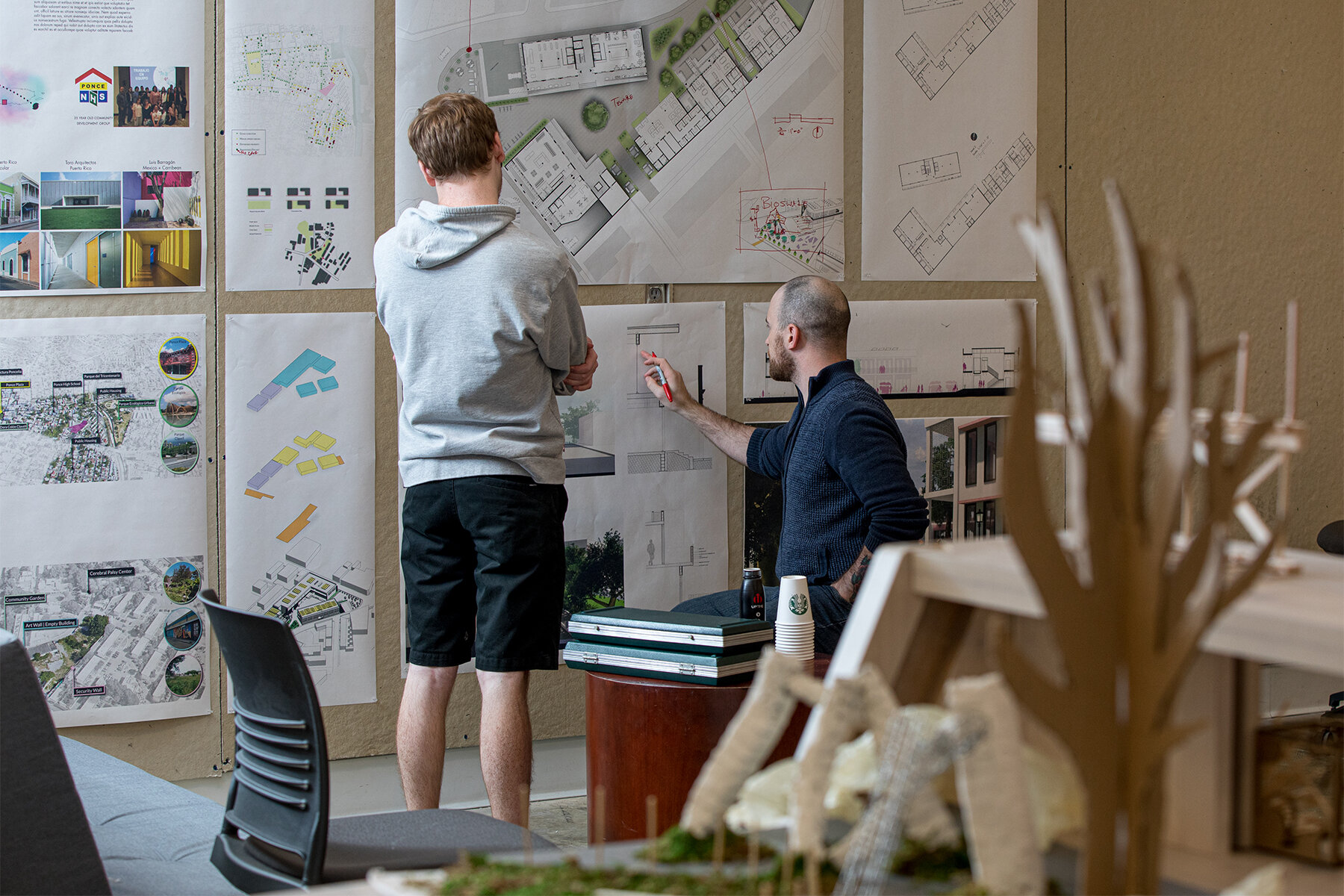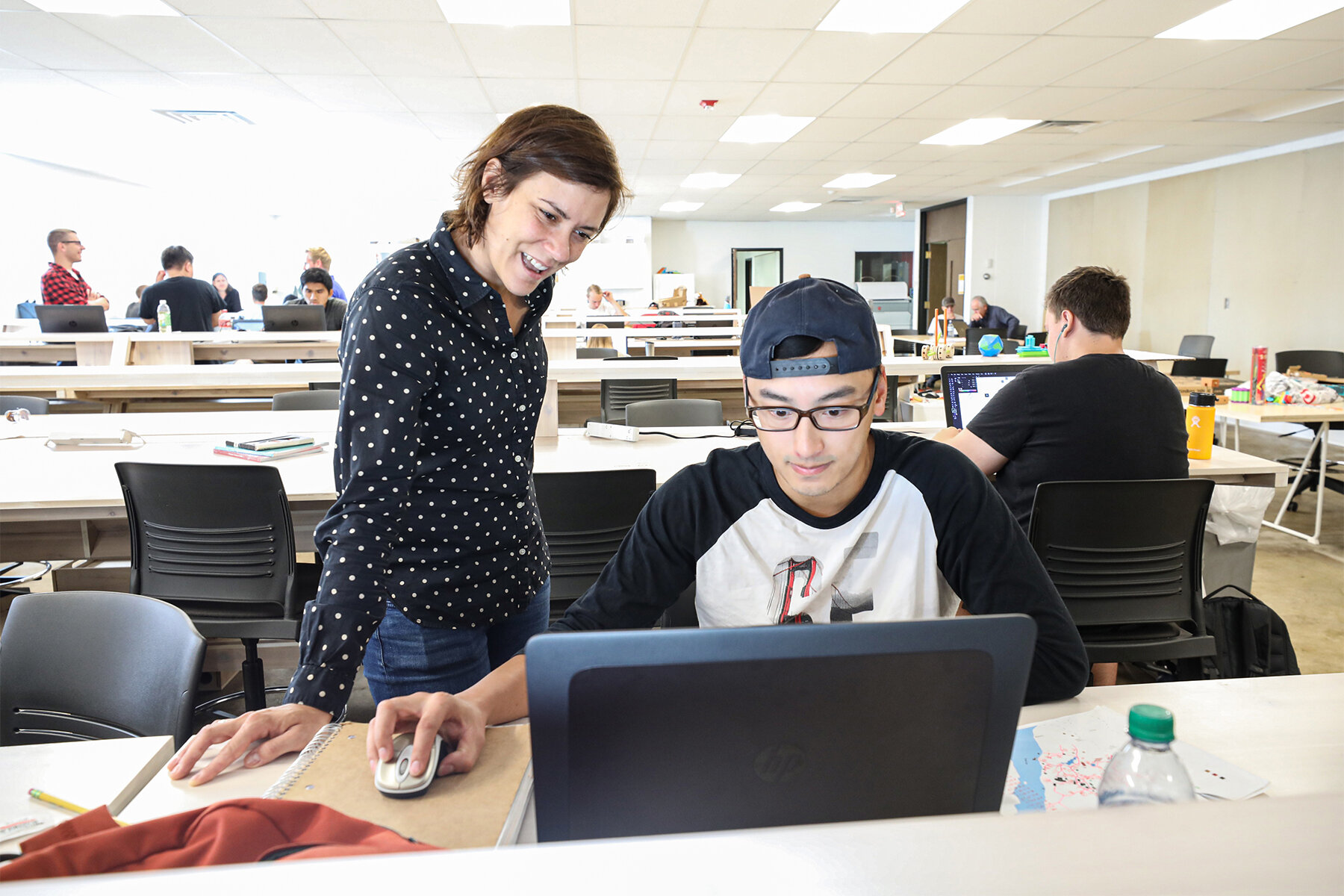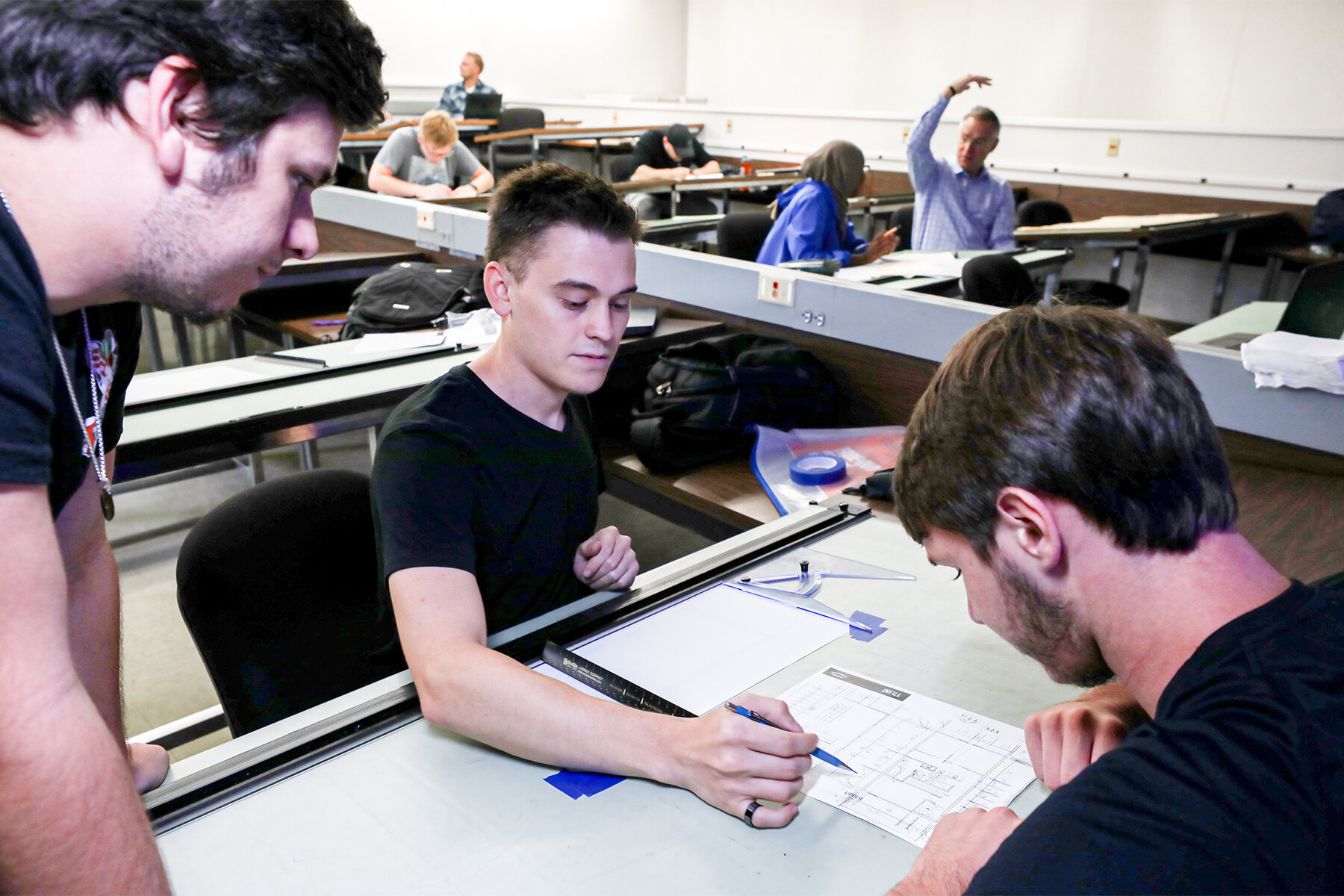Dunwoody College Launches a School of Design
The Minneapolis school brings three design programs together while working to make architectural training and licensure accessible to all
By Cinnamon Janzer | September 16, 2021
Graphic design students in the Dunwoody College School of Design. Photo by Kathy Helgeson.
FEATURE
Women and people of color have long been underrepresented in the architecture profession. As of 2020, less than one in six architects identified as people of color, and less than one in four architects were women, despite recent gains in both percentages. This past year, Dunwoody College in Minneapolis has implemented two big changes designed to grow diversity in the field.
In July, Dunwoody brought its architecture, interior design, and graphic design programs together into a new School of Design. In doing so, the college is providing its design students with opportunities for cross-pollination with allied disciplines the students will collaborate with in their professional lives. At the same time, Dunwoody has taken concrete steps to grow the accessibility of its architecture program—and thus the path to the profession, as well.
Scenes from architecture, interior design, and graphic design classes and studios. Photos by Kathy Helgeson.
“We take an interdisciplinary approach where each program helps the others,” says architect Trevor Bullen, AIA, dean of the School of Design. “By pulling the programs together and keeping the emphasis on design, we can better serve our students and better focus our efforts.
“It’s exciting to be in this place, at this time,” he adds. “Minneapolis is at the nexus of this moment of general racial awakening. So, it’s important for us to be thinking about the place of the built environment in the pursuit of racial justice.”
Bullen sees a growing awareness of the built environment’s role in historic inequality in the U.S., and he considers the new School of Design to be an opportunity for Dunwoody to be part of a course correction. “We’re now coming to terms [as a society] with the issues of redlining and how economics and the environment go hand in hand,” he says. “I’d argue that our role as designers should be affirmative. It’s our job to reflect the diversity of the communities we represent. That’s going to be a big focus of the School of Design.”
“We take an interdisciplinary approach where each program helps the others. By pulling the programs together and keeping the emphasis on design, we can better serve our students and better focus our efforts.”
Korrin Howard, the director of the interior design and graphic design departments, says the consolidation of the three programs into one school is a natural progression for the three disciplines. “I feel like there are endless possibilities for interior design and architecture students—and graphic design students, too—to collaborate,” she says. “Architecture firms are now moving toward in-house graphic design, branding, and marketing, so [they can create] this kind of whole client experience.”
“That’s why we have a professional advisory committee—to help us understand the skills that our graduates are going to need and how our programs can support the professions as a whole,” Bullen explains.
He says most students get internships and go on to contribute to the school’s high placement rates—92 percent for architecture and interior design and 75 percent for graphic design. “Most of our classes are morning classes, which allows students to have part-time jobs in the industry in the afternoons,” Bullen adds.
From left to right: Trevor Bullen, AIA, dean of the Dunwoody College School of Design; Korrin Howard, director of the interior design and graphic design programs; and Maura Rogers, AIA, director of the architecture program. Photos by Kathy Helgeson.
In addition to leveraging Dunwoody’s hands-on, learn-by-doing approach to education, the architecture program is working to make the field more accessible for women and people of color. In 2019, the program received an accreditation that enables its students to “stack” a two-year, technical Associate of Applied Science degree with a three-year, professional Bachelor of Architecture completion degree. And this summer, Dunwoody became one of 28 programs across the country to be accepted into the National Council of Architectural Registration Board’s Integrated Path to Architectural Licensure (IPAL) program, which creates a pathway for students to earn licensure upon graduation.
Licensure requires completion of the Architectural Experience Program (AXP) and the Architect Registration Examination (ARE), which typically take years to complete after graduation; by allowing participating schools to integrate licensure requirements into their curricula and motivated students to complete the AXP and ARE concurrently, IPAL significantly lowers the time and cost barriers that keep many from entering the profession.
“Historically, our profession has been based on an apprenticeship model,” says architect Maura Rogers, AIA, the new director of Dunwoody’s architecture program. “Apprenticeship is great, but the world we live in has changed.” Rogers expects that the two aforementioned opportunities—the IPAL program, and the five-year professional degree that allows students with a two-year associate degree to transfer into the third year—will make the Dunwoody program and a career in architecture more accessible to traditionally underrepresented groups.
Bullen agrees. “As a person of color in a profession that has very few people of color,” he says, “I’d love to see us fully represent the communities we serve.”


